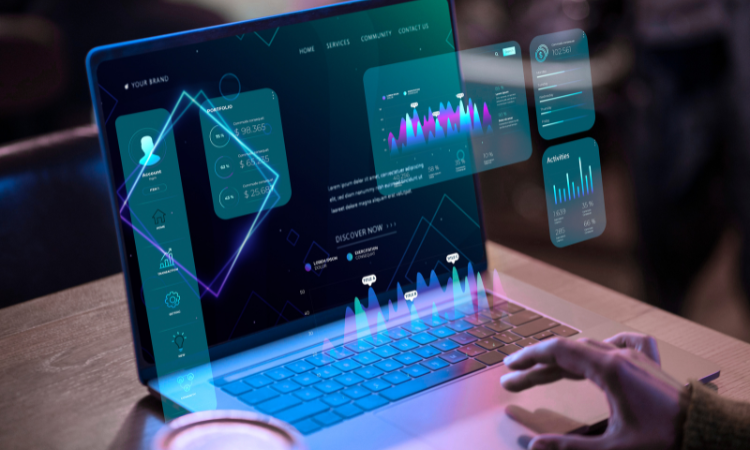Customer feedback isn’t just growing—it has officially exploded.
Back in 2023, Forrester predicted that open-text volumes would double by 2024 and they were right. Today, teams are flooded with input from every direction: post-interaction surveys, support tickets, social reviews, and in-product comments. It’s rich with customer insights yet most of it stays untapped without the right approach.
For teams, this means one thing: you’re getting more unstructured feedback than ever and fewer hours or resources to make sense of it.
Manual coding? Too slow. One-off text-mining tools? Siloed. Spreadsheet tag-athons? Unsustainable.
That’s why mastering thematic analysis methodologies is now really important. Done right, they converts raw text into reliable themes, ties sentiment to churn or NPS, and spots revenue leaks before they hit the board report.
In this article, we’ll break down the three foundational thematic analysis methodologies—inductive, deductive, and reflexive—and help you choose the one that fits your feedback type, goals, and timeline. You’ll also learn how to apply semantic and latent lenses to go deeper when needed, and how to build a scalable workflow that delivers team-ready insights in record time. Let's get started!
TL;DR
-
Thematic analysis helps CX, Product, and Research teams turn open-text feedback into reliable themes that connect directly to sentiment, churn, and revenue risk.
-
Inductive, deductive, and reflexive methodologies each offer a different lens—discovery, validation, and interpretation—depending on your feedback goals and data complexity.
-
Semantic vs. latent lenses let you choose between coding what was said vs. uncovering what's really driving it, speed vs. depth, depending on the need.
-
Choosing the right method depends on factors like data volume, research question, timeline, and whether you're exploring or testing themes. Hybrid strategies often work best.
-
A structured workflow turns methodology into action, from multi-channel unification to AI-powered coding, sentiment scoring, and ROI tracking across roles.
-
Best practices like grounding in theoretical frameworks, reviewing themes iteratively, and tying feedback to business KPIs ensure insight quality and actionability.
-
Common pitfalls like over-theming, switching methods mid-stream, or ignoring context dilute insight and derail strategic decisions.
-
Zonka Feedback’s AI Feedback Intelligence supercharges thematic analysis with auto-tagging, impact analysis, multilingual NLP, role-based dashboards, and real-time anomaly detection saving manual effort and surfacing what matters, faster. You can get early access to its AI Feedback Intelligence or start a free trial of its existing Survey & CXM platform.
Eliminate Guesswork with AI-Driven Thematic Analysis📈
Prioritize what matters and drive action in real-time. Turn qualitative feedback into measurable insights tied to CSAT, NPS, and churn using Zonka Feedback's AI-powered Thematic Analysis.

What is Thematic Analysis & Why Should CX Teams Care?
At its core, thematic analysis is a method for identifying, organizing, and interpreting patterns—or “themes”—within qualitative data.
Think of it as the strategic layer between raw customer comments and business action. Instead of reading through thousands of open-text responses one by one, thematic analysis helps you categorize feedback into recurring topics, sentiments, and pain points. The result? A clearer view of what customers are saying, what they’re feeling, and most importantly—what to prioritize.
It can also operate on different levels of meaning. You can analyze what customers say at face value (semantic themes), or dig into what they imply or feel beneath the surface (latent themes). We'll explore this distinction further in detail, but both lenses play a key role in choosing the right approach for your data and your goals.
Why this Matters for CX Teams?
Whether you're owning the NPS score, leading retention efforts, or closing the feedback loop, you need more than just a sentiment score. You need to know what’s actually driving customer behavior and how fast you can act on it.
Thematic analysis gives your teams the ability to:
-
Spot recurring friction points across surveys, chats, and reviews
-
Understand not just what customers are saying, but why it matters
-
Tie themes and sentiment directly to churn, CSAT drops, or feature adoption
-
Translate feedback into clear, role-based next steps, not just another 50-slide report
This isn’t just about listening. It’s about turning open-text feedback into decision-making fuel that your team and your execs can move on.
Core Thematic Analysis Methodologies
Different business questions call for different lenses. Here are the three cornerstone approaches to thematic analysis, each with its own speed-versus-depth trade-off and ideal use case for different teams.
1. Inductive Thematic Analysis – Bottom-Up Discovery
Inductive analysis starts with a clean slate—no pre-defined categories, no assumptions. You let the data speak for itself, identifying themes as they naturally emerge from customer feedback. It’s a bottom-up approach that’s ideal when you’re exploring unknown territory or reacting to sudden shifts in sentiment or KPIs.
When to use it:
-
Post-launch feedback from a new product or feature
-
Investigating a drop in NPS or spike in churn
-
Open-ended survey questions in new markets
Why it matters:
It helps you discover blind spots that structured feedback or pre-existing taxonomies might miss. With Thematic analysis tools like Zonka Feedback that offer AI Topic Discovery feature, inductive analysis becomes scalable even across thousands of verbatims.
2. Deductive Thematic Analysis – Top-Down Hypothesis Testing
Deductive analysis starts with a pre-set codebook or hypothesis. You're not exploring—you're testing. For example, if your team suspects delivery delays are hurting satisfaction, deductive analysis lets you tag and measure every relevant mention.
When to use it:
-
Monthly or quarterly CX tracking reports
-
Regulatory compliance or audit documentation
-
Testing the impact of known issues on sentiment or KPIs
Why it matters:
It delivers fast, repeatable, and scalable analysis—especially when you’re under pressure to show trends and progress. Deductive methods keep everyone aligned around known issues and how they’re evolving.
3. Reflexive Thematic Analysis – Iterative Sense-Making
Reflexive analysis acknowledges that meaning is constructed, not fixed. You don’t just apply codes; you refine them as you immerse yourself in the data. It’s iterative, researcher-led, and perfect for deep, contextual understanding especially when feedback is nuanced or cross-cultural.
When to use it:
-
Longitudinal studies (e.g., brand trust over time)
-
Multi-market voice of customer programs
-
Qualitative UX research where codes evolve with insight
Why it matters:
Reflexive analysis offers unmatched depth. It’s ideal when your organization needs story-rich, insight-backed narratives for executive decisions or roadmap shaping.
Quick Comparison: Which Method Fits Where?
Each thematic analysis methodology serves a different purpose—and choosing the right one depends on your feedback type, analysis goal, and how fast you need actionable insight. Here’s a side-by-side view to help you evaluate which method aligns best with your team’s needs and business context.
| Methodology | Best For | Data Volume | Bias Risk | Time-to-Insight | Strategic Value |
| Inductive | Uncovering new or unknown issues, exploring emerging themes, reacting to sudden KPI shifts | Flexible (small to large); best with >5k verbatims for pattern strength | Low – grounded in data | Medium (faster with automation) | High discovery power; reveals blind spots and early warning signs |
| Deductive | Validating hypotheses, tracking known issues, auditing compliance categories | Best with medium to large datasets (10k+); consistent themes over time | Medium – depends on codebook accuracy | Fast – structure is predefined | Enables consistent reporting, benchmarking, and regulatory defensibility |
| Reflexive | Deep-dive analysis, evolving perceptions, multi-market or longitudinal studies | Small to mid-sized datasets; ideal for iterative insights | Medium – researcher-led but reviewable | Medium to slow – iterative process | Delivers narrative depth, contextual richness, and stakeholder engagement |
Analytic Lenses: Semantic vs. Latent Themes
Choosing a thematic analysis methodology is only part of the equation. You also need to decide how deeply you want to interpret your feedback. That’s where semantic vs. latent analysis comes in, not as standalone methods, but as analytic lenses you apply to any thematic approach.
a. Semantic Themes: Surface-Level Clarity
Semantic analysis focuses on the literal words used by customers. You're coding exactly what was said—nothing more, nothing less.
Take this comment: “I had to enter my card details three times before it finally worked.”
A semantic read would tag it as “card-entry error.” It’s literal, fast to code, and directs action straight to the Payments team. When clarity and speed matter, this is the lens that works.
Why use it?
-
It’s fast and easy to scale
-
It works brilliantly when clarity and speed matter most
-
It’s perfect for frontline teams who need direct, actionable issues
When to Stay Semantic
Stick to semantic analysis when speed and scale trump nuance. Some scenarios where it shines include:
-
You need a same-day readout for Support or Operations
-
You’re triaging 50,000+ chat transcripts
-
You’re giving agents a clear to-do list (e.g., "Fix load time", not "Restore user trust")
b. Latent Themes: The Deeper Layer
Latent analysis dives deeper. Instead of tagging the obvious, you look for what’s driving the comment emotionally or contextually.
Now take that same comment: “I had to enter my card details three times before it finally worked.”
Through a latent lens, you might code it as “process frustration → low trust in payment security.” This version tells a richer story—one that could inform UX copy, error handling design, or broader trust messaging.
Why use it?
-
It reveals root causes and helps with emotion detection
-
It brings dimension to your reports and strategy decks
-
It helps teams understand the “why,” not just the “what”
When to Go Latent?
Lean into latent analysis when you need depth and clarity behind scattered feedback. It’s especially powerful when:
-
NPS is dropping but comments seem disconnected
-
You’re preparing a strategic CX narrative for execs
-
Your product or service relies heavily on trust, emotion, or brand experience
💡 Pro Tip: The same customer comment can lead to completely different outcomes depending on the lens you apply. Always use semantic when you need a quick fix and use latent when you're uncovering root causes or shaping the roadmap. Match the lens to the decision at hand.
Choosing the Right Method: Inductive vs. Deductive vs. Reflexive
When conducting thematic analysis, the method you choose isn’t just a preference—it shapes the entire direction of your qualitative data analysis. It affects how quickly your team can act, how deeply you understand what customers are saying, and how credible your story sounds to leadership.
In this section, you’ll learn how to pick the right methodology based on your data type, analysis goals, and business context. We’ll also cover how to mix methods strategically and what mistakes to avoid if you want reliable, role-ready insights.
How to Make the Right Call?
Whether you’re analyzing qualitative data from surveys, reviews, support tickets, or interviews, the first step is to match your method to your research intent. Use this simplified guide to align on the right thematic analysis approach before you start tagging.
1. Are you validating a known pain point or business theory?
If yes → Use a deductive thematic analysis approach
This top-down method is ideal when your thematic analysis in qualitative research is hypothesis-driven. You apply a pre-built codebook based on theoretical frameworks, known KPIs, or prior waves of feedback—making it perfect for monthly CX reporting or tracking sentiment shifts over time.
2. Are you dealing with large volumes or exploring something new?
If yes → Use inductive thematic analysis
This bottom-up approach allows themes to emerge directly from raw data. It’s especially useful in qualitative analysis when launching a new product, entering a new market, or reviewing 50k+ verbatims from open-ended survey question responses. Inductive coding helps identify patterns and insights that aren’t visible with structured tools.
3. Is your study evolving over time or spanning multiple markets?
If yes → Use reflexive thematic analysis
Reflexive analysis supports iterative sense-making. You refine themes as you analyze, which is essential when customer expectations shift, language evolves, or cultural nuances emerge—making it a go-to for longitudinal qualitative research or global VoC programs.
Hybrid Strategies that Balance Depth and Scale
The smartest teams rarely stick to just one approach. Instead, they combine methods across the lifecycle of their qualitative research to optimize both discovery and decision-making.
Inductive Discovery → Deductive Tracking
-
Start with inductive coding on your first batch of qualitative feedback
-
Convert top insights into a structured codebook
-
Use deductive tagging for recurring KPI dashboards
This will help you capture emerging issues, then scale structured analysis to link themes directly to sentiment, churn risk, or revenue opportunity.
Reflexive Sprint → Deductive QA
-
Let regional teams use reflexive analysis to surface nuanced or cultural patterns
-
Apply deductive thematic analysis centrally for consistency and audit-readiness
This ensures both narrative depth and analytical rigor especially important when you're linking qualitative themes to business KPIs.
Inductive Micro-Bursts After Product Releases
-
Run short inductive sprints after each major release
-
Spot unexpected friction and fold new themes into your long-term deductive framework
This agile cycle captures real-time feedback, enabling your product and CX teams to adjust course without delay.
Turning Thematic Analysis Methodology into Action
Once you’ve selected your thematic analysis methodology—whether inductive, deductive, or reflexive—the real work begins. This is where the analysis process takes shape and your methodology turns from theory into momentum.
Whether you're working from an existing theory (as in a deductive approach), building themes directly from your data set (inductive), or letting themes evolve through interpretation (reflexive), this workflow brings structure to your qualitative research. The steps below walk you through how to go from raw feedback to theme development, surfacing meaningful patterns that connect directly to business KPIs.
Step 1: Unify Multi-Channel Feedback
When your data set includes surveys, support chats, social reviews, and interviews, you need a centralized view. Analyzing each source in isolation means missing the connections that reveal systemic friction or recurring expectations.
Unification is especially important in framework analysis or discourse analysis, where theoretical concepts or language patterns are applied across contexts.
💡 Pro Tip: Consolidate feedback from every channel into one dashboard—deduped, searchable, and organized for analyzing data in real time. It gives teams a consistent foundation for applying thematic analysis methodologies at scale.
Step 2: Pre-Process & Auto-Translate (GDPR-Safe)
Clean data is essential to any analysis process. Before generating themes, you need to scrub duplicates, remove PII, and normalize text especially when working with large, multilingual datasets.
For global CX teams, analyzing qualitative data in 5+ languages is common. Translation tools help, but they often miss tone or cultural nuance. As a qualitative researcher, you must ensure the translated content still reflects the customer’s intent.
💡 Pro Tip: Zonka’s AI auto-translates verbatims across 37+ languages while preserving intent and tone. The system also flags low-confidence translations so your team can closely examine anything critical.
Step 3: Code & Refine Themes (Manual + AI Suggestions)
This is where your methodology meets motion. If you're following a deductive thematic analysis approach, you'll work with a list of predetermined themes based on existing theory, prior interviews, or stakeholder input.
In an inductive process, you’ll identify common themes as you work through the text—ideal for uncovering unexpected issues. Reflexive approaches let you revise as you go, especially when the researcher closely examines evolving feedback tone or market shifts.
Some teams also use a hybrid of narrative analysis and theme development—starting with open coding, then shifting into structure once themes emerge.
Step 4: Score Sentiment & Business Impact
Once you’ve finished generating themes, the next step is to quantify their weight. Not all themes carry the same impact—some signal frustration, others point to loyalty-building moments. This is where qualitative data analysis meets quantitative data, helping you move beyond “what’s being said” to “what’s driving business results.”
For teams using a deductive thematic analysis approach, this step also helps validate whether your predetermined themes align with actual customer sentiment. If you’re working within a framework analysis model, this is your chance to score each theme against strategic drivers like effort, trust, or satisfaction.
💡 Zonka Feedback's AI Feedback Intelligence platform uses NLP to perform sentiment analysis and then overlays it with business metadata (e.g. ARR, customer tier) to identify which themes carry the most weight. You’ll know which issues are just loud and which ones are costly.
Step 5: Visualize in Shareable Role-Based Dashboards
Data is only powerful when it’s visible and tailored to the right audience. Whether you’re running a deductive approach with structured themes or exploring organic feedback through an inductive analysis, how you visualize the results can shape how stakeholders respond.
Dashboards should map back to your research question and role-specific concerns. Product teams may want to see UX blockers by region, while CX teams may need sentiment trendlines over time. And executives? They want to know what’s hurting NPS or preventing revenue growth.
💡 Different teams need different insights. Zonka Feedback lets you create role-based dashboards so each team sees only what matters to them—Product sees feature themes, CX tracks sentiment trends, and execs get NPS-impacting customer insights at a glance.
Step 6: Alert & Act – Trend Detection, Agentic AI Nudges
The goal of analyzing data isn’t just to observe patterns—it’s to act on them. This is especially critical for deductive thematic analysis, where watching known issues spike in real time can help teams prevent escalation.
With automated trend alerts and AI-powered insights, you move from researcher closely examines to platform instantly alerts cutting lag time from days to minutes.
Ask, “Why is sentiment down for enterprise accounts this week?” and AI survey tools like Zonka Feedback will scan the data set, apply your theoretical concepts, and surface actionable themes.
Step 7: Track ROI Over Time
The final step is proving that all your theme development, tagging, and qualitative research led to real outcomes. Whether your analysis was built on existing theory or driven by emergent themes, you need to close the loop.
This is where dashboards meet strategy, tracking how product changes, policy updates, or support scripts tied to themes impacted KPIs like churn, CSAT, or conversion. This is essential in any framework analysis or narrative analysis model where you need to tell a before-and-after story.
💡 Zonka automatically tracks theme resolutions, compares metrics before and after action, and links insights to stakeholder initiatives so you can show not just what was said, but what changed.
From Insight to Impact: Methodology-Driven Best Practices (& Mistakes to Avoid)
Mastering thematic analysis isn’t just about choosing the right methodology; it’s about applying it with discipline. Whether you're taking an inductive approach to discover emerging themes, using deductive coding to test predefined themes, or refining themes in a reflexive, iterative process, how you structure your work determines the quality of your outcomes.
Here’s how to turn your coding process into valuable insights and avoid the common mistakes that stall your analytic process or skew your results.
Best Practices that Strengthen your Thematic Analysis
Here are some best practices that you must implement to get deeper insights with thematic analysis
1. Start With a Clear Thematic Framework
Even in an inductive approach, sketching out a basic thematic framework helps guide early analysis. It can evolve, but it gives your team a shared lens for identifying themes and producing themes with consistency. This keeps you from coding in a vacuum and helps align expectations across teams.
2. Use Initial Codes to Surface Emerging Themes Quickly
Start with initial codes—even if they feel rough. This is crucial in focus groups or survey responses where customer language is messy. Early coding helps reveal underlying meanings before you narrow down into meaningful categories. You can use AI-powered tools to cluster similar responses and suggest potential themes faster.
3. Keep Reviewing Themes as your Data Set Grows
Thematic analysis is never “set it and forget it.” Build in regular reviews to merge duplicates, split overly broad codes, or surface unexpected insights. In reflexive analysis, this means updating your own interpretations as new insights emerge. This is especially important when your data is still being collected (e.g. rolling NPS surveys, ongoing focus groups).
4. Tie Themes to your Theoretical Background or Business Goals
If you're using a deductive coding strategy, ground your predetermined codes in either pre-existing theories, business OKRs, or journey stages. Otherwise, it’s easy to apply separate themes that sound right but aren’t actionable. Themes rooted in a clear theoretical background give your analysis credibility with leadership and allow for better tracking over time.
5. Visualize How Different Codes Relate Using a Thematic Map
Especially in reflexive or hybrid approaches, a thematic map helps you show how different codes relate. For instance, “confusion during sign-up” and “lack of onboarding email clarity” may stem from the same meaning. This supports storytelling and pattern recognition across data channels.
Common Methodology Pitfalls that Undermine Insight
Here are some common missteps to watch out for when conducting thematic analysis especially when working with large data sets, multiple teams, or switching between methodologies.
1. Over-Theming
Creating 40+ predefined themes might seem thorough, but it leads to analysis paralysis and reports that no one reads. When you slice feedback into too many buckets, it becomes harder to spot meaningful patterns or identify common themes across data sources.
How to dodge it: Focus on developing meaningful categories and consolidating similar initial codes. Aim for clarity and actionability, not exhaustiveness.
2. Ignoring Underlying Meanings in Coded Data
Not all similar-sounding feedback belongs in the same theme. When you apply the same code to every comment that mentions “speed” or “confusion,” you risk flattening the nuance that makes qualitative analysis valuable. Different phrases often carry different underlying assumptions.
How to dodge it: During theme development, review coded data regularly. Make sure each theme captures not just keywords, but the underlying meanings driving the feedback.
3. Switching Methodologies Midway without Recalibration
Starting with an inductive approach and then layering in predefined themes later? That’s doable—but only if you realign your framework. Midstream shifts can break consistency, especially if your team applies new codes without revisiting the thematic framework or your research question.
How to dodge it: If you need to change methods, pause to document your updated analytic process and retrain your team on how different codes are now defined.
4. Skipping Reliability Checks in the Coding Process
If two people apply the same code differently, your insights lose credibility. This is especially risky in deductive thematic analysis, where you're working with predetermined codes that must stay consistent.
How to dodge it: Have at least two analysts code a sample of the same data. Then compare, align, and clarify definitions before continuing. This also helps refine your thematic map and reduce ambiguity in interpreting themes.
5. Forgetting to Link Themes Back to the Business
Themes that don’t connect to KPIs, goals, or strategy become academic. If your team identifies themes like “frustration with onboarding” or “lack of follow-up” but doesn’t link them to metrics like NPS or conversion, you’ll struggle to show impact.
How to dodge it: Whether you’re working from a theoretical background or uncovering new insights from an inductive analysis, make sure every theme ties back to business outcomes.
How Zonka Feedback Elevates Thematic Analysis Methodologies?
Choosing the right thematic analysis methodology is essential but Zonka Feedback makes it actionable, scalable, and radically faster. Whether you're running an inductive deep-dive, applying deductive models to known issues, or using a reflexive approach to evolve insights over time, Zonka’s AI-powered platform helps you get to themes, sentiment, and business impact without drowning in open-text. Here’s how:
-
AI-Powered Thematic Analysis (Inductive & Deductive on Demand): Zonka’s AI doesn’t just summarize feedback, it applies advanced NLP to detect emerging themes (inductive) or validate predetermined codes (deductive) based on your analysis goals. You can switch between exploratory and structured analysis depending on the problem you’re solving. It’s flexible enough for researchers and fast enough for product teams on tight timelines.
-
Impact & Sentiment Scoring that Ranks Themes by Business Risk: Not all themes carry the same weight. Zonka's AI Feedback Intelligence automatically scores each theme by sentiment intensity and links it to KPIs like churn risk, NPS movement, or revenue loss so your team focuses where it matters most.
-
Unified Feedback Hub that Breaks Down Silos: With Zonka Feedback, you can say goodbye to scattered tools and isolated data sets. It unifies all qualitative feedback—surveys, support chats, app reviews, emails—into one searchable hub. You’ll analyze faster, share insights more easily, and eliminate the “whose numbers are right?” debate for good.
-
AI Copilot Q&A: Zonka’s AI Copilot lets you skip the filters and go straight to answers. Just ask questions and the system scans themes, sentiment shifts, and underlying meanings to surface root causes instantly.
-
Trend Detection Alerts & Agentic AI: Zonka AI continuously monitors your feedback and flags anomalies or sudden spikes in particular themes before they escalate into bigger issues. This is your early-warning system, powered by agentic AI that suggests next steps instead of just describing the problem.
-
Multilingual NLP & Auto-Translation: With Zonka Feedback, you can collect feedback in any language. Its multilingual NLP and GDPR-compliant auto-translation engine lets you analyze global feedback with no extra analyst hours and no accuracy loss. You’ll capture voice-of-customer from every region, without extra tools or manual effort.
-
Role-Ready, Shareable Dashboards to Drive Action: Insight is only useful if it reaches the right person. Zonka Feedback lets you build role-based dashboards tailored to CX, Product, Marketing, or Executive views so each team gets the themes and metrics that matter to them.
Conclusion
Customer feedback is your richest source of growth insight but only if it’s translated into action. Thematic analysis methodologies like inductive, deductive, and reflexive aren’t just academic terms—they’re powerful frameworks for turning unstructured customer data into themes that drive product fixes, CX wins, and executive-level clarity.
Whether you're surfacing new issues, validating known friction points, or interpreting evolving sentiment across markets, your choice of methodology shapes how fast, how deeply, and how credibly your teams can respond. But methodology alone isn’t enough. Without the right customer experience tools, even the best analysis plan stalls under the weight of spreadsheets, silos, and skipped steps.
Zonka Feedback's AI Feedback Intelligence platform is built to operationalize thematic analysis—cutting manual effort, auto-scoring sentiment and impact, and delivering role-ready insights that your teams can act on immediately. This thematic analysis software not only identifies emerging and predefined themes across massive volumes of qualitative feedback, but also maps them to business outcomes like churn, NPS drops, and conversion blockers. With multilingual NLP, trend detection, agentic AI nudges, and an AI Copilot, Zonka Feedback makes your entire analysis process faster, deeper, and built for data-driven decisions.
Ready to turn thousands of open-text comments into business-ready themes faster?
Get early access to Zonka’s AI Feedback Intelligence platform or if you want to explore its existing suite, sign up for a free trial and enhance CX like never before!











